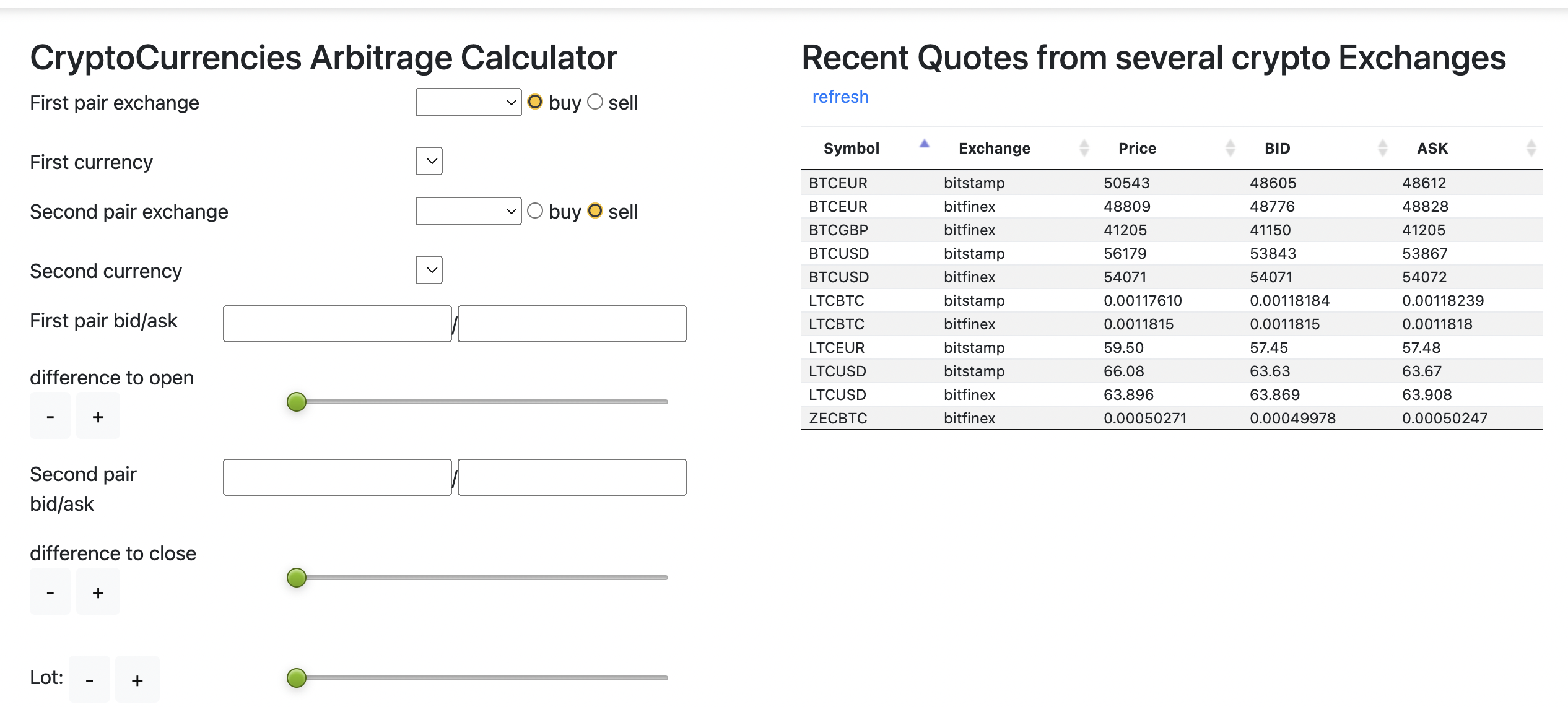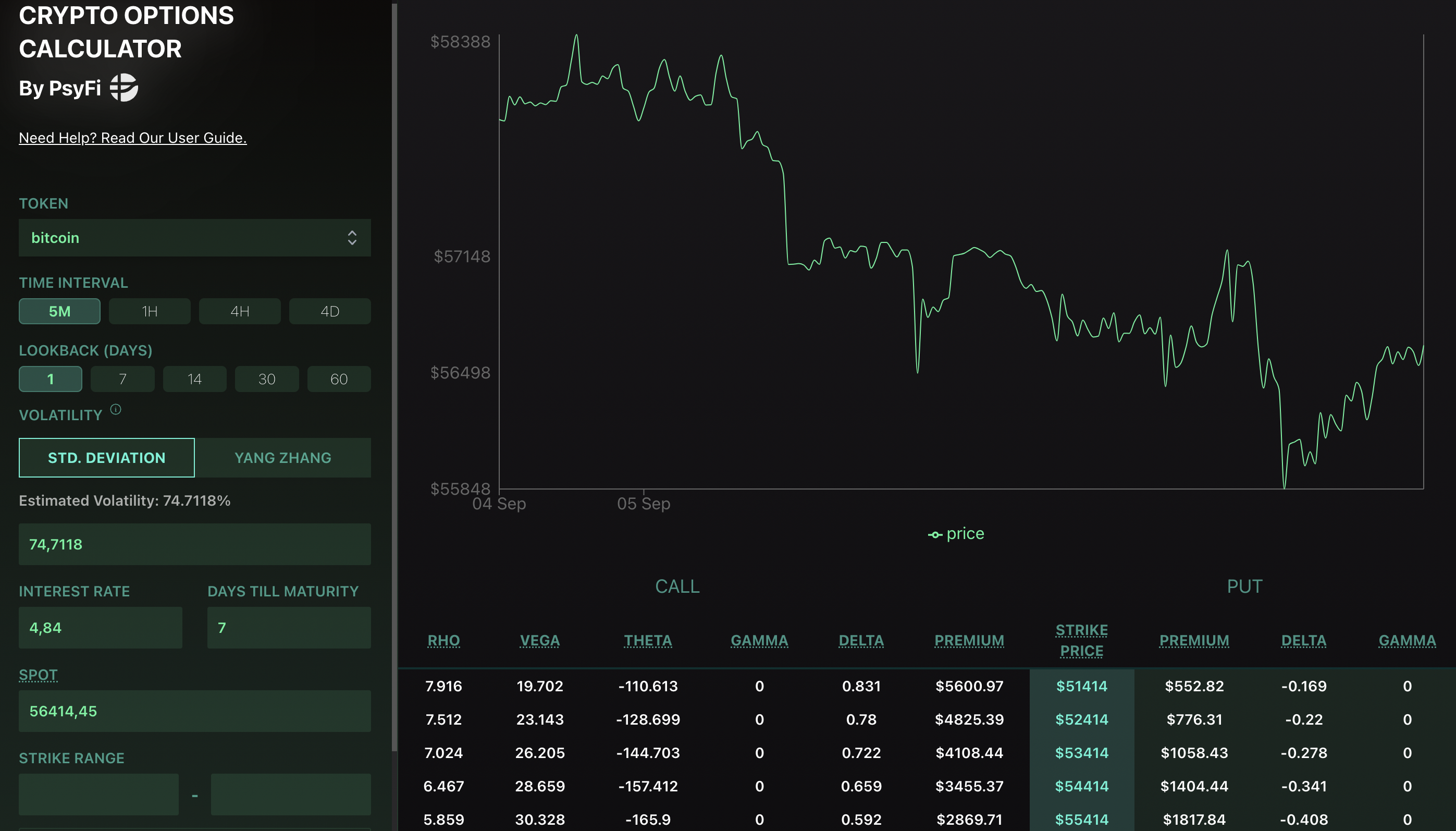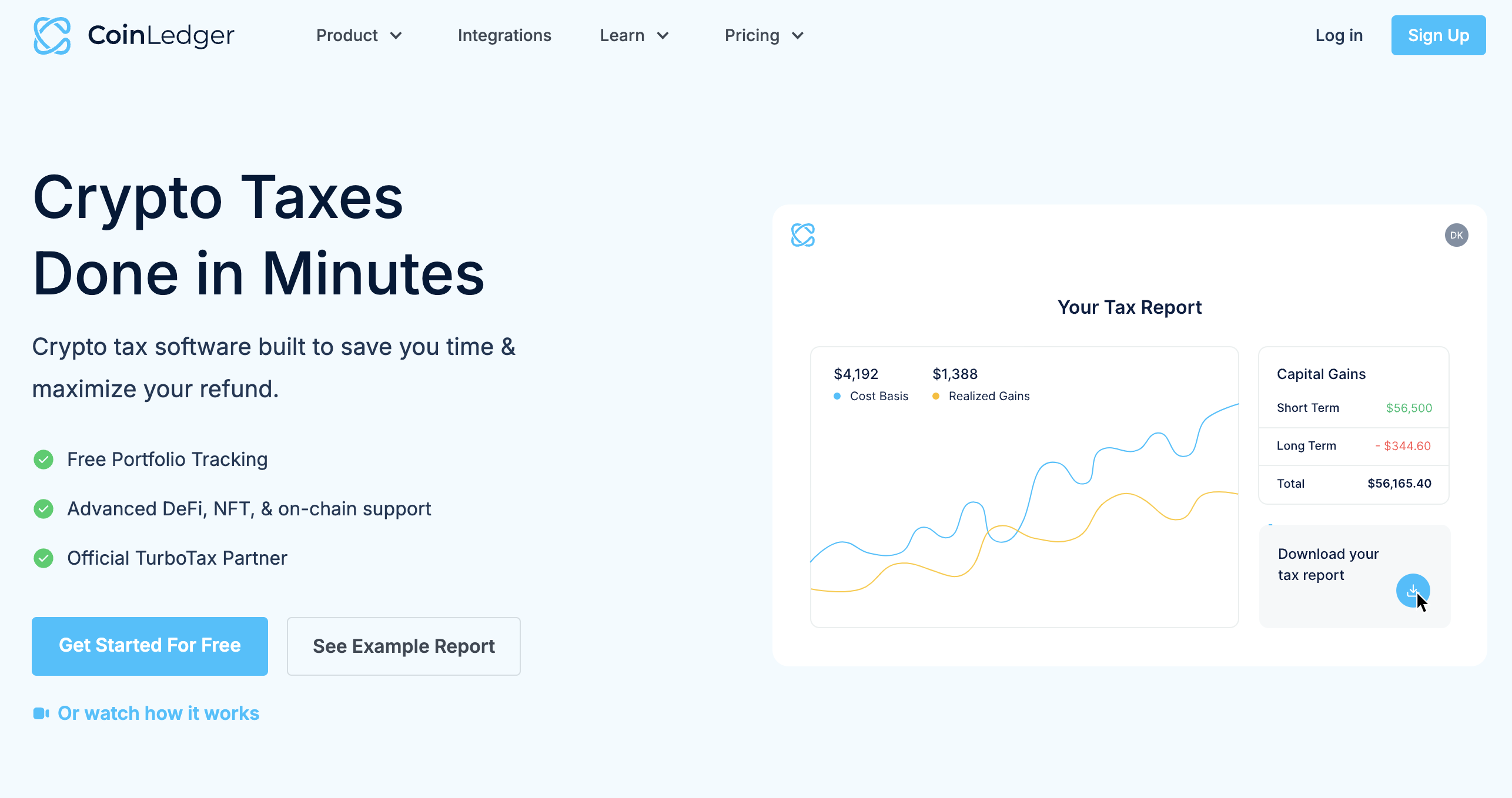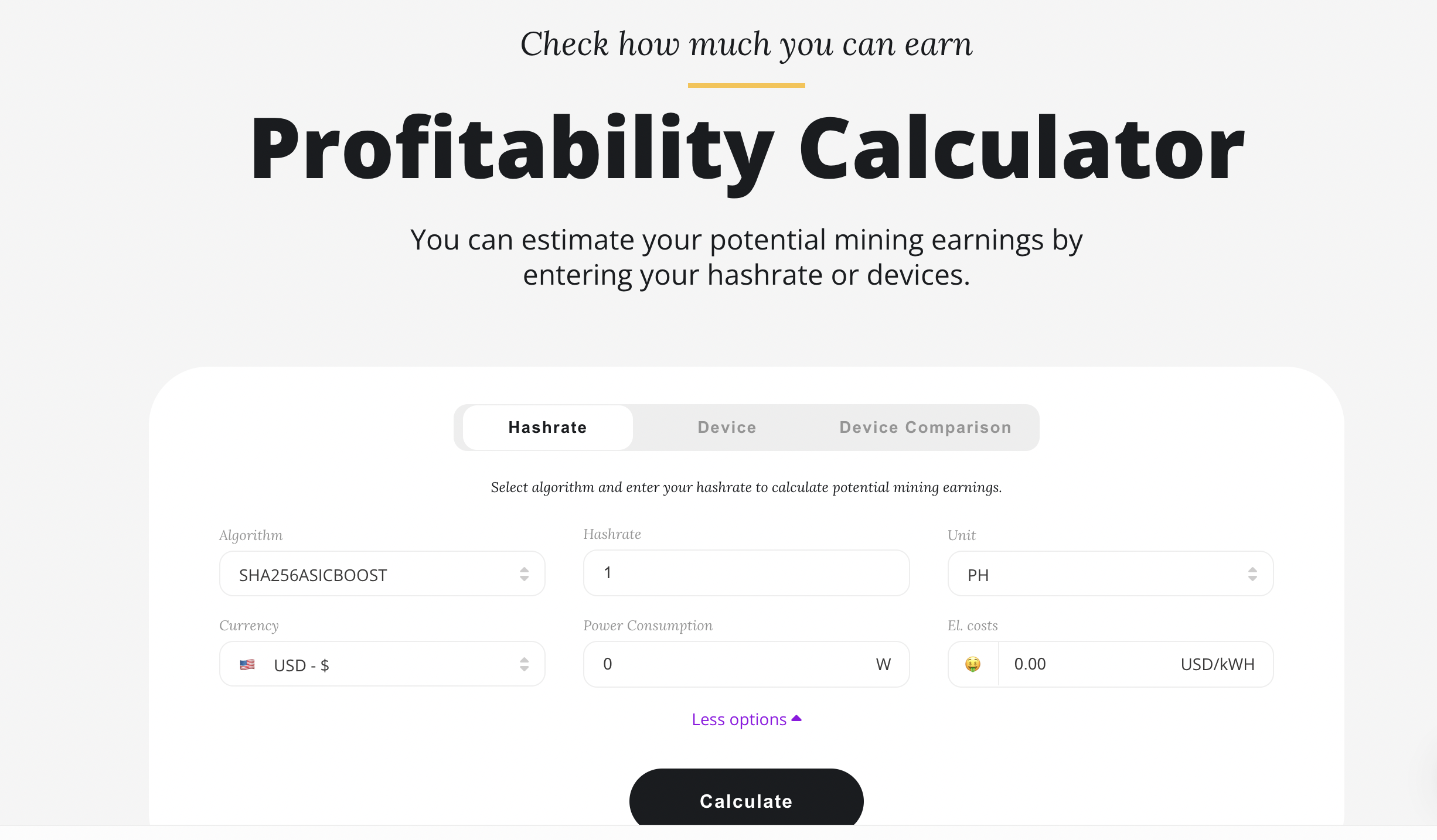Given the volatility of the crypto market, traders must accurately assess potential profits and losses. Crypto calculators are valuable tools in this regard.
They help estimate returns and manage potential risks. Calculators are also crucial to evaluate trading fees, including spreads, commissions, and leverage financing.
Read on to discover the best crypto profit calculators for 2026. We also explore the different types of calculators and how to use them effectively.
Here’s a glance at the most useful crypto calculator profit tools:List of the Best Crypto Profit Calculators for 2026:
Top 10 Crypto Profit Calculators of 2026: Reviews & Comparisons
To help you identify the right crypto calculator, we’ll now move on to our comprehensive reviews.
1. CoinStats – Calculate Profits By Connecting Your Crypto Wallet
CoinStats is a popular crypto portfolio tracker offering a free profit calculator. You can use this tool by entering the purchase and sale price of the respective crypto. It also considers investment and exit fees for more accurate calculations. CoinStats supports a wide range of crypto coins. Interestingly, it also lets you connect your crypto wallets and exchange accounts.
This way, it automatically calculates your portfolio movements. Moreover, it provides timely alerts on performance metrics. The integrations can be made via APIs. Alternatively, you can also upload CSV files containing details of your portfolio.

CoinStats claims to use encrypted connections and only provides read-only access to your accounts. It’s available online or via the mobile app for iOS and Android. The latter enables you to track profits and losses on the go. While some CoinStats features can be used for free, the paid plans support up to 500 different portfolios.
Pros:
Cons:
2. Koinly – Popular Crypto Coin Profit Calculator With 800+ Integrations
Koinly is a crypto tax and portfolio tracking platform. It also features a free crypto profit calculator. You can connect your portfolio and track your gains, income, losses, and other expenses. It lets you import crypto transactions from over 800 integrations via APIs or CSV files.
This includes exchanges, wallets, and blockchains. Crucially, it tracks individual crypto performance within each wallet/exchange. Koinly provides PnL estimates from staking, mining, airdrops, and DeFi protocols.

The potential PnL assessments are also converted to fiat. It also offers a free tax preview of your crypto portfolio. Moreover, it uses AI to detect transfers between self-controlled wallets and exclude them from tax calculations. To access the full generated report, you’ll need a paid plan.
Pros:
Cons:
3. Cashback Forex – Calculate Trading Fees Charged by Different Exchanges
Cashback Forex features a variety of free calculators. Its crypto calculator takes trading fees directly from exchanges. This way, you can assess the potential profit after deducting commissions. Additionally, you can also set custom fee rates.
This is especially useful as most exchanges determine commissions based on the user’s trading volume. Cashback Forex supports all the leading crypto exchanges. You can also specify which crypto-cross or crypto-fiat pair you’re trading.

The calculator is straightforward and beginner-friendly. However, it doesn’t calculate the potential PnL. Additionally, users must manually account for the spread and deposit/withdrawal fees. Therefore, it doesn’t offer a holistic analysis of trading fees.
Pros:
Cons:
4. Binance Futures Calculator – Estimate PnL for Margined Futures Contracts
The popular crypto exchange Binance also has a dedicated futures calculator. It estimates key metrics like initial margin and PnL. You can also discover the ROI and liquidation price before placing trades. The calculator is available directly from Binance’s futures trading interface.
It supports both long and short positions. Moreover, you can choose the leverage level up to 50x. The tool can be used for both USDⓈ and Coin Margined Contracts. You can input the crypto pair from the supported coin list. Binance explains how it calculates the key parameters, which is a great way to evaluate the findings.

For USDⓈ-Margined contracts, the PnL is the difference between the exit and entry prices multiplied by the quantity. On the other hand, for COIN-Margined contracts, PnL is determined using contract multipliers. These represent the value of each contract in terms of crypto and vary based on volatility.
Pros:
Cons:
5. Staking Rewards – Find Out Potential Yields From Crypto Staking
Staking Rewards has a free calculator that helps users compare potential earnings from over 50 crypto assets. It derives data directly from different staking providers, such as StakeWise, ANKR, Renzo Protocol, Binance Staking, and more.
It calculates potential rewards, considering expected price changes, staking duration, and provider fees. Additionally, users can simulate different staking scenarios by adjusting the ratio, effectiveness, participation rate, block time, and more. The results show both compounded and non-compounded rewards.

Staking Rewards also lets you adjust the expected price of the chosen crypto at the end of the staking period. All in all, there’s plenty of customization to play around with. Therefore, Staking Rewards is a great way to calculate the optimal frequency for staking based on transaction fees.
Pros:
Cons:
6. BJF Arbitrage Calculator- Calculate Profits for the Crypto Arbitrage Strategy
BJF Trading Group offers a specialized calculator for crypto arbitrage traders. Arbitrage is a strategy that leverages the price discrepancy of the same crypto on different exchanges. For instance, Bitcoin might be priced at $50,100 on Binance and $50,000 on Coinbase.
A trader can profit from the price disparity by simultaneously placing buy and sell orders on Binance and Coinbase. Although crypto arbitrage bots are available today, you must consider the strategy’s profit potential. BJF’s tool lets you simplify these calculations.

You can pick the crypto pair and state the price across both exchanges. It also considers the spread and commission charged by the respective platforms. The calculator also takes the number of positions into account. As in the image above, the platform also displays the latest price of cryptos across different exchanges for easy reference.
Pros:
Cons:
7. CryptoOptionsCalculator.com – Estimate PnL from Crypto Options Trading
CryptoOptionsCalculator.com is a free tool for traders to price crypto options. It evaluates an option trade’s potential profit by analyzing the crypto’s historical volatility. You can also input the strike price and time until expiration to refine the assessment.
The calculator lets you choose between the standard deviation or the Yang Zhang estimator for volatility models. The latter captures both intraday and overnight price movements. It also factors in live interest rates. Also included is the customization of key parameters, such as time intervals and lookback periods.

The results include detailed option prices for calls and puts. It also generates important metrics like delta, gamma, theta, vega, and rho. Users will also be able to visualize the price forecast for the option in the form of charts.
Pros:
Cons:
8. Botsfolio – Estimate Potential Earnings on Crypto Portfolios
Botsfolio is an established platform for building custom crypto portfolios. Its free calculator is designed to estimate potential returns on crypto investments. It factors in the amount invested, the investment period, expected returns, and any additional contributions or withdrawals.
Botsfolio lets you calculate PnL in two ways. First, you can choose a portfolio designed by the platform. Multiple variants are available, such as DEX, AI-based, web3, and more. It automatically shows the potential earnings based on the weightage allocated.

Alternatively, users can build their portfolio by choosing cryptos and their weightage. Bitsoflio will instantly calculate the potential returns for one, four, and five years. You can then create a custom portfolio using Bitfolio’s automated crypto trading tools or other platforms.
Pros:
Cons:
9. CoinLedger – Calculate Crypto Profits After Taxes
CoinLedger simplifies the complex process of crypto tax reporting. The platform offers a user-friendly interface that allows users to import transaction data from various exchanges, wallets, and blockchain networks. It supports over 20,000 cryptos and integrates with over 800 platforms.
Once the data is imported, it automatically calculates capital gains and losses. The software also generates tax forms compliant with IRS regulations, including Form 8949 and Schedule D. It even calculates PnL for NFTs.

Pros:
Cons:
10. NiceHash – Crypto Mining Profitability Calculator
NiceHash is a leading platform for crypto mining. Its profitability calculator is especially popular among solo miners. It accounts for various factors such as electricity costs, mining hardware efficiency, and current network difficulty to estimate mining profitability.

In fact, the calculator can even auto-detect the mining equipment. Users can also choose between different mining algorithms. The tool calculates estimated daily, weekly, and monthly earnings in both crypto and fiat currencies. NiceHash excels in offering a user-friendly interface with real-time profitability data.
Pros:
Cons:
What is a Crypto Coin Profit Calculator?
Crypto profit calculators are tools designed to help estimate potential earnings or losses from digital asset transactions.
These calculators consider various factors, such as:
- Purchase price
- Selling price
- Trading commission
- Spread
- Leverage
- Margin
All you need to do is input the relevant data, and the calculator will instantly give you an account of your PnL. Depending on the type of calculator, it can be used for different trading strategies and instruments. This includes spot trading, futures trading, staking, mining, and arbitrage.
Why You Need a Crypto Calculator for Profit in 2026
Typically, manually calculating crypto trading fees can be time-consuming. Moreover, you might also make errors in calculations.
On the other hand, using a crypto coin profit calculator comes with the following benefits:
- Simplifies Complex Calculations – These tools instantly compute potential gains or losses. They factor in costs like fees, spreads, and leverage – saving you from tedious manual calculations.
- Optimizes Profit Calculations for Strategies – Some calculators find profits based on strategies. So you can find potential profits for arbitrage, grid trading, or other approaches.
- Consider the Type of Crypto Asset – Whether you’re involved in spot trading, futures, or staking, these calculators allow you to assess different instruments’ profitability quickly.
- Saves Time – A profit calculator streamlines the process. This allows you to focus on strategy rather than the math intricacies.
- Enhances Risk Management – Finally, by simulating various scenarios, these tools help you understand potential outcomes. This makes for better decision-making.
Overall, crypto profit calculators are indispensable for staying ahead in the competitive trading world.
Types of Crypto Profit Calculators
In this section, we explore the most common types of crypto calculators you’ll come across:
Crypto Investment Profit Calculator
This calculator measures profit or loss by comparing the crypto’s initial buying price with its current or projected selling price. For instance, suppose you bought 2 Ethereum at $1,500 each and sold them at $2,000 each. Then, your profit would be $1,000.
These calculators are typically used for long-term crypto investments. They account for investment commissions and exit fees. For those unaware, exit fees are the costs of selling or withdrawing crypto.
Futures Profit Calculator
Crypto futures are derivatives that let you trade digital assets without owning them. These contracts obligate you to buy/sell crypto at a predetermined price on a future date. Crypto futures trading often involves leverage – which multiplies the gains and losses.

Futures calculators, therefore, consider the entry/exit prices, leverage, and contract size. Margin requirements are also factored in, ensuring traders understand how much capital is needed to maintain their positions.
For instance:
- Imagine you enter a Bitcoin futures contract at $1,000 with 5x leverage.
- You decide to trade 5 contracts.
- The total exposure would be $5,000 ($1,000 x 5 contracts).
- With 5x leverage, you only need 1/5th of the position size as margin.
- So, the required margin would be $5,000 / 5 = $1,000.
- If the price of Bitcoin increases to $1,200 and you close the position, the profit would be ($1,200 – $1,000) x 5 contracts = $1,000.
- With 5x leverage, this is effectively a $1,000 gain on your $1,000 margin.
- Conversely, if the price falls to $800, your loss would be ($1,000 – $800) x 5 contracts = $1,000, leading to a 100% margin loss.
Additionally, you’ll also have to consider trading commissions for futures trades.
Crypto Options Profit Calculators
Crypto options are another type of financial derivative. Unlike futures, these give traders an option to execute a crypto trade in the future. For calculating options profits, it’s important to consider the strike price.
This is the price at which the option can be exercised. The premium, which is the cost of the option contract, is also considered.
Crypto options come in two main types:
Call Options
These give the right to buy the underlying crypto. If the crypto’s price is above the strike price, the profit is calculated as follows:
Crypto Price at Expiration – Strike Price – Premium.
For instance,
- Suppose a call option has a $50 strike price, a $5 premium, and a current price of $60.
- Then profit would be $60 – $50 – $5, which is $5 per contract
If the current price is below the strike price, the loss is the premium paid. In the above example, it would be $5 per options contract.
Put Options
Put options give you the right to sell a crypto at an expiration date. For put options, profit is realized only if the price at expiration is below the strike price. Otherwise, the maximum loss is the premium paid.
If the underlying asset’s price is below the strike price, the profit is:
Strike Price – Crypto Price at Expiration – Premium
For example:
- Consider a crypto put option with a $50 strike price, a $5 premium, and a current price of $40.
- Profit would be $50 – $40 – $5, equalling to $5 per contract
You can then multiply the number of options contracts you trade to find the final PnL.
Crypto Staking Profit Calculators
These calculators help estimate potential earnings from staking crypto. In a nutshell, staking is the process of holding and locking up a specific amount of crypto in a blockchain network. The deposited crypto will be used for the blockchain’s operations, such as validating transactions.
And, in exchange, you’ll receive interest. Staking profits depend on factors like the locked amount, duration, network reward rates, and sometimes the crypto’s inflation schedule.
For example:
- Let’s say you’re staking 1000 Cardano (ADA) at a 5% annual staking reward rate.
- A staking calculator will estimate your yearly return to be 50 ADA.
- Some calculators also factor in the compounding effect, where staked rewards are added to the principal, increasing future earnings.
Advanced staking calculators consider variables such as network fees, slashing risks (penalties for misbehavior in staking), and pool performance.
- For example, a calculator might show that after a year of staking 1000 Polkadot (DOT) at a 12% reward rate, you could earn 120 DOT.
- However, if the staking pool takes a 5% commission, your actual profit would be reduced to 114 DOT.
These tools are invaluable for planning staking strategies – especially for those who want to leverage their idle crypto for passive income.
Crypto Mining Profit Calculators
Crypto mining involves solving complex puzzles to verify transactions on a blockchain. In return, miners earn new coins and transaction fees.
When calculating crypto profit from mining, factor in your equipment’s power (hash rate), as well as electricity costs. Some tools also consider how hard it is to mine at a given time.
Let’s take an example:
- Imagine you’re a BTC miner using a high-powered ASIC mining machine.
- Suppose it generates 110 terahashes per second (TH/s) and uses 3,250 watts of electricity.
- To estimate your profit, you’d enter these details into the calculator.
- You’d also enter the cost of electricity at your location, the current reward for mining Bitcoin, and the level of mining difficulty.
- The calculator might show that you could earn 0.0002 BTC daily.
Some calculators even let you add the equipment’s cost and how it wears down over time, giving you a clearer picture of whether mining is worth it.
Common Fees to Consider When Calculating Crypto Profit
While crypto calculators estimate PnL, some don’t always consider fees like spreads and commissions.
Below, we outline the most important fees to ensure you get an accurate calculation.
Trading Commissions
Trading commissions are fees exchanges charge each time you buy or sell crypto. These fees vary between platforms and are often calculated in percentages. Trading commissions can add up, especially for frequent traders.
For instance, if you make a $10,000 trade, a 0.1% commission results in a $10 fee. Over multiple trades, these fees can significantly impact your overall profits. Some exchanges offer tiered fee structures. Meaning, the more you trade, the lower your commission.

Factoring these fees into your PnL calculation is essential, as neglecting them may lead to overestimating your potential gains. Ultimately, crypto profit calculators that don’t account for trading commissions can give misleading results.
Spreads
The spread is the difference between a crypto’s buying and selling price. Unlike trading commissions, spreads are not always displayed as a direct fee, making them harder to quantify.
For example:
- Suppose you buy Bitcoin at $55,000, and the selling price is $55,200.
- The $200 difference represents the spread.
Larger spreads usually occur in less liquid markets or during high volatility. Even if a trading platform advertises low commissions, wide spreads can erode your profits – especially for high-frequency traders.
Deposit/Withdrawal Fees
Deposit and withdrawal fees are charges imposed by exchanges when moving funds in and out of the platform.
For example:
- Suppose an exchange charges a 1% withdrawal fee for deposits.
- Meaning if you withdraw $10,000, you lose $100 to fees.
- Some exchanges have fixed crypto withdrawal fees, like 0.0005 BTC for Bitcoin.
Frequent deposits and withdrawals can diminish your profits even if the trading fees seem low. For instance, if you’re regularly transferring funds between wallets or exchanges, the cumulative cost of these transactions can reduce your net gains.
How to Choose the Right Crypto Calculator Profit Tool
When choosing a crypto coin profit calculator, ensuring accuracy, ease of use, and comprehensive analysis is important.
Here are some top features to consider.
- User-Friendly Interface – Look for tools with a clean and intuitive interface. The calculator should enable easy data input and provide clear results. Also, check if the tool explains how it calculates profits and losses.
- Incorporation of Real-Time Data – If trading profit calculators are used, it’s important to ensure they import real-time data. Especially if the calculator extracts crypto prices from an exchange. With the crypto market’s rapid fluctuations, having up-to-date information is crucial for making timely decisions.
- Support for Multiple Cryptos – A robust calculator should handle a wide range of cryptos. This versatility allows you to manage diverse portfolios and account for gains and losses across all your investments.
- Integration With Other Tools – Choose a calculator that integrates seamlessly with other investment management tools. Features like portfolio tracking, tax reporting, and exchange API connections offer more holistic results.
- Advanced Analytical Features – Seasoned traders can also look for calculators offering advanced analytics. This includes predictive models, scenario simulations, and trade-by-trade analysis.
The majority of crypto profit calculators are free. Therefore, you can try and test multiple models to find out which tool is most suitable.
Step-by-Step Guide to Using a Crypto Profit Calculator
Using crypto profits calculators is straightforward. Nevertheless, we have included the step-by-step process below.
- Choose a Calculator – Select a reliable crypto profit calculator that supports your needs. For instance, you may need to calculate potential PnL, staking rewards, mining earnings, tax, etc.
- Create an account – Some premium crypto profit calculators require you to create an account to use its services. You often only need to provide an email address and create a password.
- Connect Your Exchange – The best calculators let you connect your exchange or wallet to track your portfolio. This can be done by copy-pasting the API key.
- Input Your Details – Enter the required details. For a simple profit calculation, the fields will be the crypto’s purchase and selling price. Additionally, you will need to enter the investment amount and exit fees.
- Press ‘Calculate’ – The calculator will now compute your net profit or loss and other relevant metrics.
The majority of crypto calculator profit tools available today are free. They allow users to input basic values such as entry and exit prices, leverage, and contract size. They’re accessible, user-friendly, and effective for casual traders or beginners who need a quick, straightforward calculation. Free calculators typically provide insights into gross PnL. However, they often don’t account for complex elements like fees, taxes, or real-time market data. These limitations make free calculators best suited for simple trading scenarios and smaller portfolios. On the other hand, if you want to factor in elements like taxes or trading fees – it’s worth considering a premium option. Premium crypto profit calculators offer real-time data integration, tax reporting, and customizable fee structure. They also support different accounting methods like FIFO or LIFO. These tools are ideal for professionals who require insights into their potential profits after taxes and fees. While premium calculators come with a cost, they offer greater precision, better portfolio management, and compliance tools.Comparing Free vs. Premium Crypto Profit Calculators
Conclusion
In summary, the right crypto coin profit calculator can be useful in making informed decisions. They offer insights into how price, fees, and market conditions impact profitability.
Choosing the right tool can significantly enhance your investment experience. Additionally, leveraging these calculators can help you optimize your strategy and minimize potential losses.
FAQs
What are crypto profit calculators?
Crypto profit calculators help you determine the financial gains or losses from investments. You can find estimated PnL by inputting details like purchase price, sale price, and quantity.
How to use crypto calculator profit tools?
For calculating crypto profit, simply enter the relevant transaction information, such as entry/exit price, position size, and the pair. The calculator will provide you with insights into your profit or loss.
What is the difference between free and paid crypto profit calculators?
Free calculators are great for quick estimates. Premium options provide more detailed analysis, including tax considerations and advanced portfolio tracking.
Can crypto profit calculators handle multiple cryptos?
Yes, most calculators offer support for multiple crypto coins. This enables you to analyze profits or losses across a diverse portfolio.
Are crypto profit calculators accurate?
The accuracy of crypto profit calculators depends on the data provided. Always verify calculations with up-to-date information for precise results.







